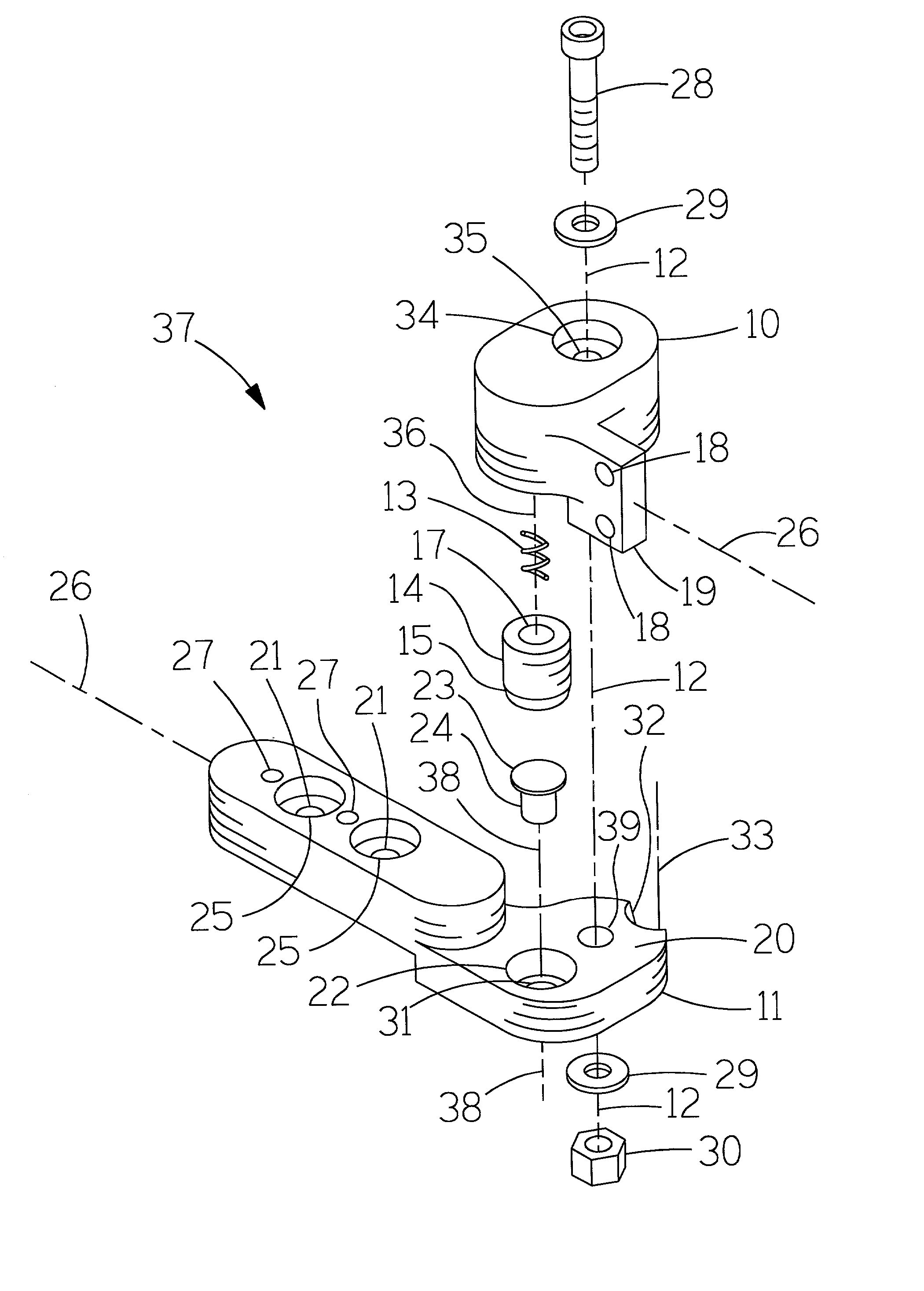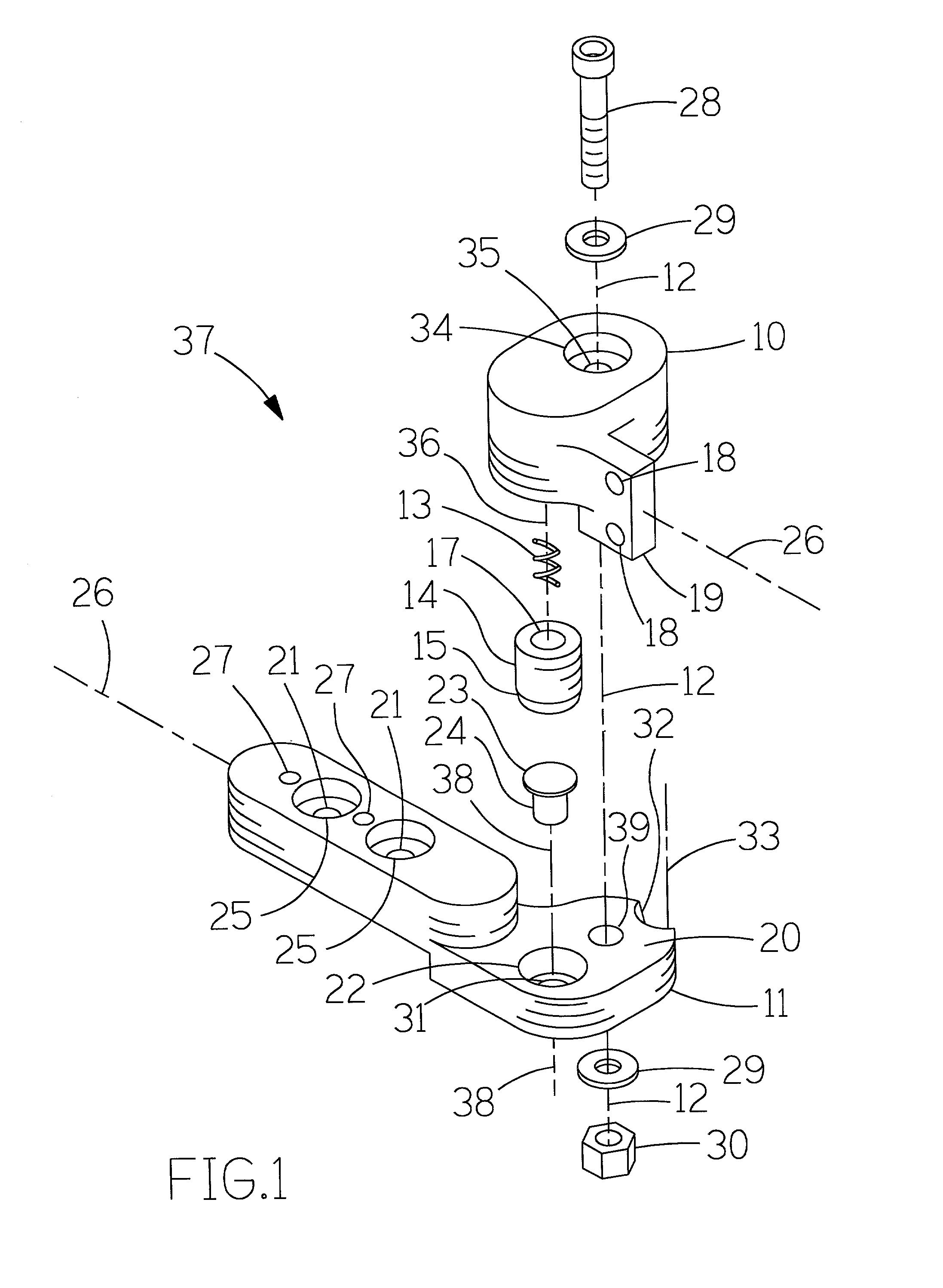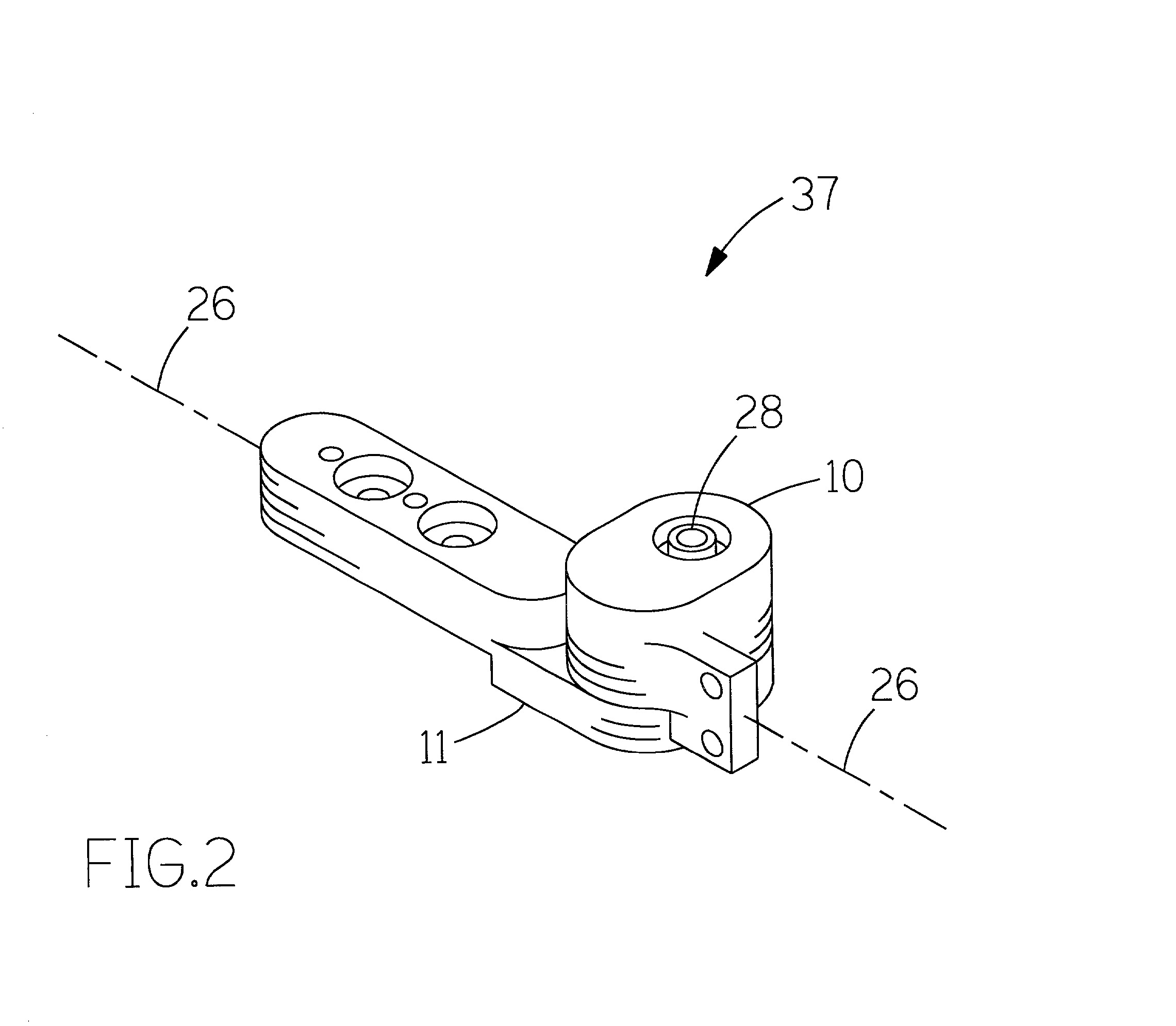Locking hinge
a hinge and hinge body technology, applied in the field of locking hinges, can solve the problems of not being easily adaptable to paintball guns and shoulder rests
- Summary
- Abstract
- Description
- Claims
- Application Information
AI Technical Summary
Problems solved by technology
Method used
Image
Examples
Embodiment Construction
[0018] Referring now to the drawings, and more particularly FIGS. 1-3, there is shown a locking hinge 37. Generally, a locking hinge 37 includes a hinge joint axis 12, a first hinge plate 10, a second hinge plate 11, a spring 13, a locking cylinder 14 and a push button 24.
[0019] Shown in FIGS. 4, 5 and 6, a first hinge plate 10 has a receiving counter bore 16 which contains a spring 13 and guides locking cylinder 14. One end of spring 13 contacts the bottom of counter bore 16. The other end of spring 13 contacts locking cylinder 14 through spring guide hole 17. Counter bore 16 allows locking cylinder 14 free movement along the axis of the locking mechanism 36. First hinge plate 10 has a symmetry axis 26. First hinge mounting holes 18 are equally spaced about the symmetry axis 26.
[0020] As seen in FIGS. 1, 5 and 6, second hinge plate 11 has receiving hole 31 which push button 24 is inserted. Push button 24 stops at the bottom of tapered circular cavity 22 because of flange 23. Tapere...
PUM
 Login to View More
Login to View More Abstract
Description
Claims
Application Information
 Login to View More
Login to View More - R&D
- Intellectual Property
- Life Sciences
- Materials
- Tech Scout
- Unparalleled Data Quality
- Higher Quality Content
- 60% Fewer Hallucinations
Browse by: Latest US Patents, China's latest patents, Technical Efficacy Thesaurus, Application Domain, Technology Topic, Popular Technical Reports.
© 2025 PatSnap. All rights reserved.Legal|Privacy policy|Modern Slavery Act Transparency Statement|Sitemap|About US| Contact US: help@patsnap.com



